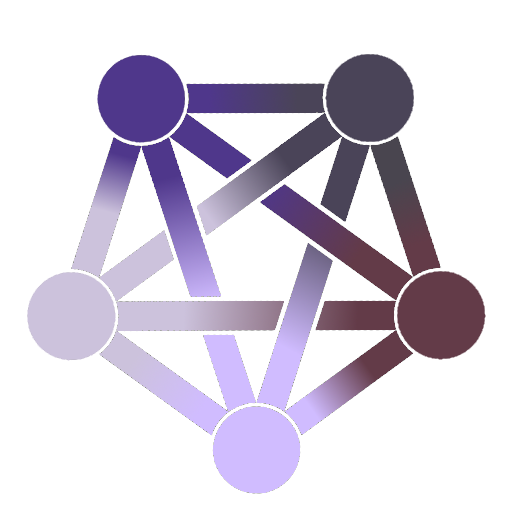I know it’s a joke but I prefer the tab option. It’s easy to convert tabs to any particular spacing or code point width. It can also vary, if wanted, based on terminal or editor type.
People with worse eyesight can have a wider indentation while those who choose can opt for something more compact
Honestly I always preferred tabs for indentation and spaces for aligning. It doesn’t break anyone’s experience. And if somebody wants
two spaces fora two-space-tab-width for indentation and other people prefer four. That will work just fine.I hate seeing 2 space indents. Unreadable AF ( to me ). At least this way I can easily work in the same codebase without somebody being annoyed ( except for the crying about the tabs )
Why not tabs for both indentation and alignment? (Actually, I see indentation as just a specific use of alignment.) Word processors have been doing it for decades (and typewriters for over a century!). Surely we can convince our code processors to use user-definable, fixed position tabs instead of relative position “tab = x spaces”.
Keeping the [TAB] character in the file then allows everyone the layout they like.
Or has working solo for 40 years fried my brain?
What I mean with tab = x spaces is only visually and not actually ( there will ( obviously) still be a tab character in my preference. Not sure if that was clear.
Because alignment are fixed characters compared to indentation. For indentation the only question is how many characters the next indentation needs to be.
For alignment it is not fixed. As an example of PHP code:
function test(&obj) { $obj->doSomething() ....->doSomethingElse() }The dots would be spaces because in IDEs people generally use a font where every character is equally wide.
If I would tab again instead of spaces it could work out if my tab length display is ( for one or more ) adds up to the width of the variable
$obj. If somebody else has a tab width of 2 rather than somebody who has 3. It would only align for one of the two people.Does make sense? I typed it out after a gym session on my phone.
Additionally. The whole problem is resolved by using spaces for both alignment and indentation. But in the cursor would still jump one space at a time rather than the whole tab ( although there are keyboard shortcuts for jumping words which would jump all of em.
I don’t know. Call me old fashioned. I like what I like :/
If I correctly understand what you are saying, you are describing “relative” tabbing, where /t moves a constant distance from the current position. I prefer “stopped” tabs where /t moves to the next tab stop. If my /t doesn’t create the spacing/alignment I’m after, I just tab to the next position.
Thus, I would set mine with the first tab position (for indenting) at 1.5 cm and subsequent tab stops at 3, 4, 5, … cm. That way I’d get perfect alignment with both fixed and proportional fonts.
I’d also set line-wrap or line-continuation to use a hanging indent based on the start position of the line being wrapped or continued.
I’d also set a boundary between code and comments so that lines always wrapped before the boundary and using the comment character at the end of a line would jump to the other side of the boundary with optional leaders (the characters, usually periods that connect the end/beginning of a gap). In an ideal world, I would be able to “hide code”, pulling all the inline comments into a “hanging indent” structure with their “parent” comments.
Yes, before the advent of IDE editors and all the fancy intellisense stuff, I used word-processing software for coding. 😀
If I correctly understand what you are saying
You did not, but he also picked an example that could be conflated with the 4-spaces issue.
They’re talking about situations where you might want to align text by a number of spaces that isn’t divisible by your tab size. I’ll expand on their example:
function test(&obj, &obj2, &a) { $obj->doSomething() ....->doSomethingElse() $obj2->doSomething() .....->doSomethingElse() $a->doSomething() ..->doSomethingElse() }Again, dots are “visible spaces” in this example, and being used to align chained methods with the length of the object name.
Edit: Bear with me while I sort out the difference between my display and the resulting code block. Ok, close enough.
Ok, thanks. I would instead (and prefer to ) do something like this:
function test(&obj, &obj2, &a) { $obj---->doSomething() ---->--->doSomethingElse() $obj2--->doSomething() ---->--->doSomethingElse() $a-->--->doSomething() ---->--->doSomethingElse() }In this case, the “>” are showing the tab stops and the “-” the resulting white space. Note how all the calls are lined up. (My preferred alignment style, not necessarily anyone else’s.)
Yet another edit: I see that I missed addressing alignment on other than tab boundaries. To me, that’s just sinful! 😀
Correct. The way I’m used to it ( and how I thought the world worked ) is that the IDE gives tab a fixed length or characters. If you set it to 4 it would be the equivalent of 4 spaces or 4 letters or whatever.
If my tab is set to 4 it would take up the width of 4 characters. If I need two indentations I would press tab twice.
If bob then checks out my code and calls me a maniac and sociopath for using indentation and swears by “2”, the code would just look more condensed. The alignment would still work out because that’s done through spaces.
var user_name = "Bob" var user_age[tab]= "Bob"This would align the
=for Bob, because it needs two characters to align and that’s what his tab width is. It wouldn’t align for me because my tab width is 4. So I would.pur two spaces instead of the . That way it is aligned for everybody regardless of their tab width settings.The way you explain it sounds like how tabs works in MS Word ( or other word processors ).
I don’t think I could work like that. I’ve only ever used IDEs to code ( regardless of how primitive they were back when I started). Interesting take though :D
The way you explain it sounds like how tabs works in MS Word ( or other word processors ).
That is exactly how they work, and after 40 years, I still struggle with the whole “tab as a shortcut for spaces” thing. It’s not that I started with word processors, either, just that as soon I started working with them, everything got so much easier for me.
There are some code-specific things that keep me from just going back to a word processor, but I think our code editors are missing some useful features that are found in word processors.
Generally I’m not very preoccupied with it as the IDE just formats it the way I like it on save :D.
Yeah, I understood the arguments against using tabs for alignment, but never really got the argument against using them for indentation.
I agree, tabs are better but I have been using spaces for so long I can’t even imagine switching to tabs. also I’d have to reformat all my abandoned projects.
Tabs are objectively the better choice as it allows each dev individually to decide tab width in their editors. Spaces in contrast don’t allow this same flexibility as they are used for much more than simply indentation, for example you likely put a space after each argument or operator IE
func(arg1, arg2)or1 + 2.Also, a lot of editors won’t unindent on backspace of spaces indentation, so I end up messing up the indentation with a 3/4 indent
That just sounds like a shitty editor, tbh. Pretty basic functionality.
Autoformatter should fix that, unless you use python. (but even then they might fix it to the closest proper indentation level)
Sometimes. I love auto formatting, I spam the shit out of it more than I spam save but it’s definitely not perfect. It gets real confused with inconsistent indention like that. Especially with Python it’ll fuckup
Yeah you need an auto formatter, which is worse than not needing it. Also yes its terrible in python like languages
Code can be viewed in more than just an editor. It might be in a terminal, rendered in a browser, etc. Sometimes you might even have to view it in an environment you don’t control. I am very disinterested in configuring each and every tool to have sensible tabstops, if such a tool can even be configured.
Then don’t? The whole reason nearly all the spaces guys do 4 spaces is cause that’s the nearly universal tab width. You won’t like this but the same exact argument can be made for spaces yet I’d bet you haven’t even once configured the width of those.
I don’t actually change tab width, it’s the default 4 spaces equivalent for me but just because I don’t take advantage of the ability doesn’t mean I should prevent others from doing so.
The whole reason nearly all the spaces guys do 4 spaces is cause that’s the nearly universal tab width.
That is provably wrong. The default tab width in vim is 8 spaces, and the default indentation in yaml is two spaces.
What’s yaml have to do with anything? It’s like python with syntactic whitespace which is unrelated to this discussion. The Tab vs Space debate is entirely around non syntactic whitespace which doesn’t effect how the code is parsed. And yes Python technically does both tabs and spaces but it’s all sorts of fucky.
Terminal editors while still used a ton aren’t really what I was referring to. Newer terminal editors such as Helix have tab width configured per language most of which default to a width of 4 spaces but toml/yaml both default to 2 spaces. I was mainly referring to GUI editors as frankly that’s just what most people use nowadays. JetBrains IDEs, Visual Studio, Eclipse, VS Code, Notepad++ were primarily what I was thinking of as I’ve used all of them and they all default to a tab width of 4 hence why I said nearly universal. Also I said nearly terminal editors being the only editors I’ve used that don’t default to a width of 4 seems like a fair usage of the term.
Now you’re just shifting the goalpost.
This is simply false, many systems have them configured by default to 8, particularly most CLI tools. Git, for example, is 8, and btw, changing it is not readily done and requires you to hack around it by using a custom pager command. In fact, all core gnu utils (and even bash itself) default to 8, as well vim, emacs, nano, gedit, etc.
I use 2 spaces since I work in Haskell, which is a significant whitespace language where you want certain syntactic constructs to exist at a different level of indentation from your main code block. So yes, I have configured it. 2 spaces is also exceedingly common for HTML (browser Dev tools renders HTML with 2 spaces, even).
There is not a universal indentation width, though it is almost always universal within a particular language or perhaps project, in which case it’s much better to have everything standardized. Code formatters enforced on a project are the norm, and those are way more impactful on how the code is read. But they are valuable because consistency is valuable. And yet, somehow you don’t have huge scores of developers complaining about being forced to format their code in a way they don’t like.
As I said, you don’t necessarily control the environment in which you are viewing code. A common example is reading code over a shared screen. So you can easily end up reading code in a way you don’t like anyway, so it may as well be some reasonable (if not preferable) standard that everyone is using.
Looking at code on somebody else’s screen is entirely missing the point of using tabs over spaces. The entire point is that mine looks like how I want and theirs looks like how they want even though the file is identical. We can each have wildly different tab width and it’ll look wildly different to each of us when we program. That’s again the point.
Code formatters are great! I love them. Using tabs over spaces is objectively a better formatting option. One of my favorite features in code formatters is that they’ll swap out spaces to tabs for you insane people who insist on mashing the space bar to indent.
Umm, you do realize no one manually enters all of the spaces, right? Basically all editors support an
expandtabfeature which inserts the amount of spaces you want whenever you hit the tab key.Code formatters behave exactly the same regardless if you’re using tabs or spaces, so not sure what you’re talking about.
I did not miss the point. I fully understand that’s why people want tabs. I just think it’s a pretty stupid and petty reason to make for a worse experience when viewing code in places you don’t control. I still don’t know why using spaces is an issue when we enforce standards in literally every other facet of contributing to a codebase. We enforce coding styles. Indentation is part of the coding style.
No, it’s not missing the point. The premise that you’re always looking at code on the same screen is false, and you don’t always have control over how all screens are configured.
Too much waste of space imo,
func(arg1,arg2)or1+2is faster to write and to read.Stilltoomuchwasteofspace
Whyusemanywordwhenfewworddotrick?
The sole purpose of the tab key is for instructing the editor to insert four spaces.
To insert a… TAB. Not four or any n number of space but TAB
After years of ass-whopping by python interpreter for stray tab characters, I’m now mentally rejecting the existence of tab character in my computing devices.
Isnt that only because you “mixed” spaces with tabs? I have had no issues with python and tabs with no spaces for intendation
Yep the ASCII table just goes 1, 2, 3, 4, 5, 6, 7, 9, 10, …
*three spaces.
Actually, let’s make that two.
2 space gang represent.
They fear us. We have to hide in the shadows.
But this is just one more example of our superiority - a perfect compromise between the file size and the nightmare that is two different invisible characters
Cycling through buttons, atl+tab, Ctrl+tab, some other fourth thing.
something something real linux users don’t use gui and tab completion
You can take my Cinnamon GUI from my cold dead hands.
And indent according to my major mode.
Team Tab Supremacy Unite!
Hell yeah tabs
Let’s just avoid indentation at all (jk).
Always remember:

“He’s me.” - Obi Wan Kenobi
As a fan of tabs I see this as an absolute win
Is this real or am I eating the onion
You’re eating the onion. I could see some government agency deciding that they as an agency would standardize on tabs, though even that would be a stretch. But not the White House.
Feels relevant
Just make everything Shittier
Maybe it is time for another civil war.
It’s pronounced “GIF”.
Hell no! It’ll be “GIF” until the day I die!
The correct answer is, was and always has been elastic tabstops
Any ides have support for this? I feel like I’ve been waiting forever.
Looks like there’s an emacs package for elastic tab stops.
Of-fucking-course there is.
Essentially no. I wish so badly that this had taken off.
Edit: as noted on the website, various plug-ins that attempt support are in fact not correct.
What do you mean? There’s a ton of working plugins listed on the website for many editors.
Sorry, my phrasing was sloppy. Most popular IDEs and editors do not have a plug-in or setting that implements elastic tabstops correctly. In particular, there’s no implementation for vim, emacs, VSCode, eclipse, or any JetBrains IDEs. (I had forgotten that there’s one for Visual Studio and one for Notepad++.)
Wow this site is hard to read, at least on mobile (haven’t tried on my PC). The line-height is too small.
I’ve been hoping someone would try that!
Man how are we gonna write all of our Whitespace programs now?
deleted by creator
MUMPS has entered the chat.
I’ll just leave this here
But like… Correct me if I’m wrong but in my experience tab does not always equal 4 spaces.
E: thanks all. I didn’t fully understand.
That’s one of the benefits of using tabs. Some people might like 4 spaces for indentation, whereas others like 2 spaces. If you use tabs, you can configure your editor to use whatever tab size you want, and they’re just stored as tab characters in the file.
Tabs for indentation, spaces for alignment (eg for ASCII art).
That’s why it’s also a big accessibility feature. With big font sizes, four spaces are distracting but you can configure tabs to show up as one character, which is way more reasonable with font sizes larger than usual
I had a colleague that is legally blind in my second real job. The dude is brilliant (and hilarious) but these things would significantly enable or screw up his productivity. I have always felt fortunate to have had direct butt in seat exposure to the importance of accessibility at such a young age.
You’re misunderstanding. In this case it means “one tab character” instead of “four space characters”.













